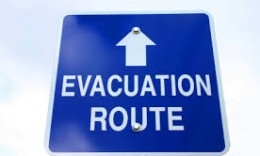Child Safety Tips for VBS

It’s the time of year when children’s ministry teams begin ramping up for planning, coordinating, and overseeing their largest outreach event of the year – Vacation Bible School (VBS). Whether you’re setting goals, preparing budgets, or creating a promotional plan; one fact remains the same…child safety should be top of mind.
VBS is unique in that is brings together, for a short period of time, new children who aren’t normally involved in the weekly church program schedule. With regards to child safety, this can be both a blessing and a challenge. A good first step is implementing a working plan or policy that focuses on protecting the children. This will go a long way in reaching their families. By prioritizing child safety you make a good first impression, promote peace-of-mind for new families, and support their belief that they’re placing their child or children in good hands.
Listed below are 6 tips to help keep child safety a top priority and a crucial part of a successful event.
1. Create Safety Goals:
These don’t have to be complicated or difficult. You may only need 1 or 2 and can utilize ones from an existing child protection policy. Keep in mind, the main point of having safety goals is to set a foundation that defines how your organization intends to protect the children in its care.
Bottom line, having safety goals established minimizes the grey area with regards to interacting with children and provides a layer of protection for staff, volunteers and adults as well.
Example:
Goal: Create a fun and safe environment for the children attending VBS by decreasing isolation and increasing accountability.
Guideline #1 – Ensure a child is never alone with an adult.
Guideline #2 – Follow the rule of 2’s for each and every bathroom break.
As you can see from the illustration above, the safety goal lays the foundation for how individuals will interact with the children.
2. Plan Ahead:
The key to prevention is having a plan that is easily understood, actionable, and communicated often. Prior to getting involved in the copious amounts of event details, make sure your VBS core team understands the ministry’s commitment to child safety and abuse prevention.
Core team members should know details such as how to report an incident, the Rule of 2’s, where the First Aid kits are located, who to call in case of emergency, and which children have allergies and what their respective reactions are to allergens.
3. Choose Volunteers Wisely:
This is very important! Many VBS programs are in dire need of volunteers so they’re willing to take anyone they can find. Start early in recruiting a set of core volunteers that have been through the entire evaluation process. The process includes a full background check, a completed written application, a face-to-face interview, and references that have been checked.
Once your core team is in place, assign someone to the task of screening volunteers, this includes the same evaluation process they completed; a background check, a written application, interview and reference check. The process should remain consistent for any individual coming into contact with children.
Once the screening process is complete the volunteer will receive their event assignment. If there’s anyone with a questionable background assign them to an activity that doesn’t include direct contact with children.
Keep in mind – it’s hard to know if anyone is 100% safe. However, by implementing a strong and consistent volunteer evaluation process you can minimize the risk of letting those who aren’t safe have easy access to children.
4. Secure Your Facility:
Make sure that VBS activities are in highly visible areas, and that you’re maintaining the correct child and volunteer ratio for each age group. If you’re going to be outside make sure that the children understand where they can and can’t go. If needed, rope off the outside areas that are off limits.
If you have concerns about the safety of your facility leverage local law enforcement and fire department resources for a site evaluation.
5. Track & Manage Child Information:
Having a secure child check-in and check-out process is equally as important as choosing safe volunteers. Whether you use pen and paper, or an electronic child check-in solution, the point is to ensure that each child is only released to those authorized to pick them up. As this can be extra challenging during VBS, and using an electronic solution is preferable.
In addition, with the increase in childhood allergies, having a process in place that tracks the health information of each child is imperative. Ensuring that volunteers have access to the information will go a long way in preventing an incident.
*If you’re currently using KidCheck, keep in mind you can add an additional temporary license or change editions to take advantage of extra features to meet the increased needs for VBS. For more information contact info@kidcheck.com
6. Construct a Follow up Plan:
In the case of an incident or emergency, make sure you have a process outlined to report and follow up with those involved. Keep accurate records and incident photos in a secure location. If a child has been hurt or injured, offer prayer and care to the child and family.
In the event that authorities have to get involved, provide your event group’s full cooperation and do nothing that would in any way obstruct an investigation.
To learn more about improving child safety, additional security tips, and best practices visit the KidCheck blog or connect with us on Twitter, Facebook, Google+, or Pinterest.
#kidmin #youthmin #churchsafety #church #ministry #pastor #VBS #checkin #stopabusenow #kidcheck
Article Sources:
On Guard: Preventing and Responding to Child Abuse at Church. Deepak Reju


